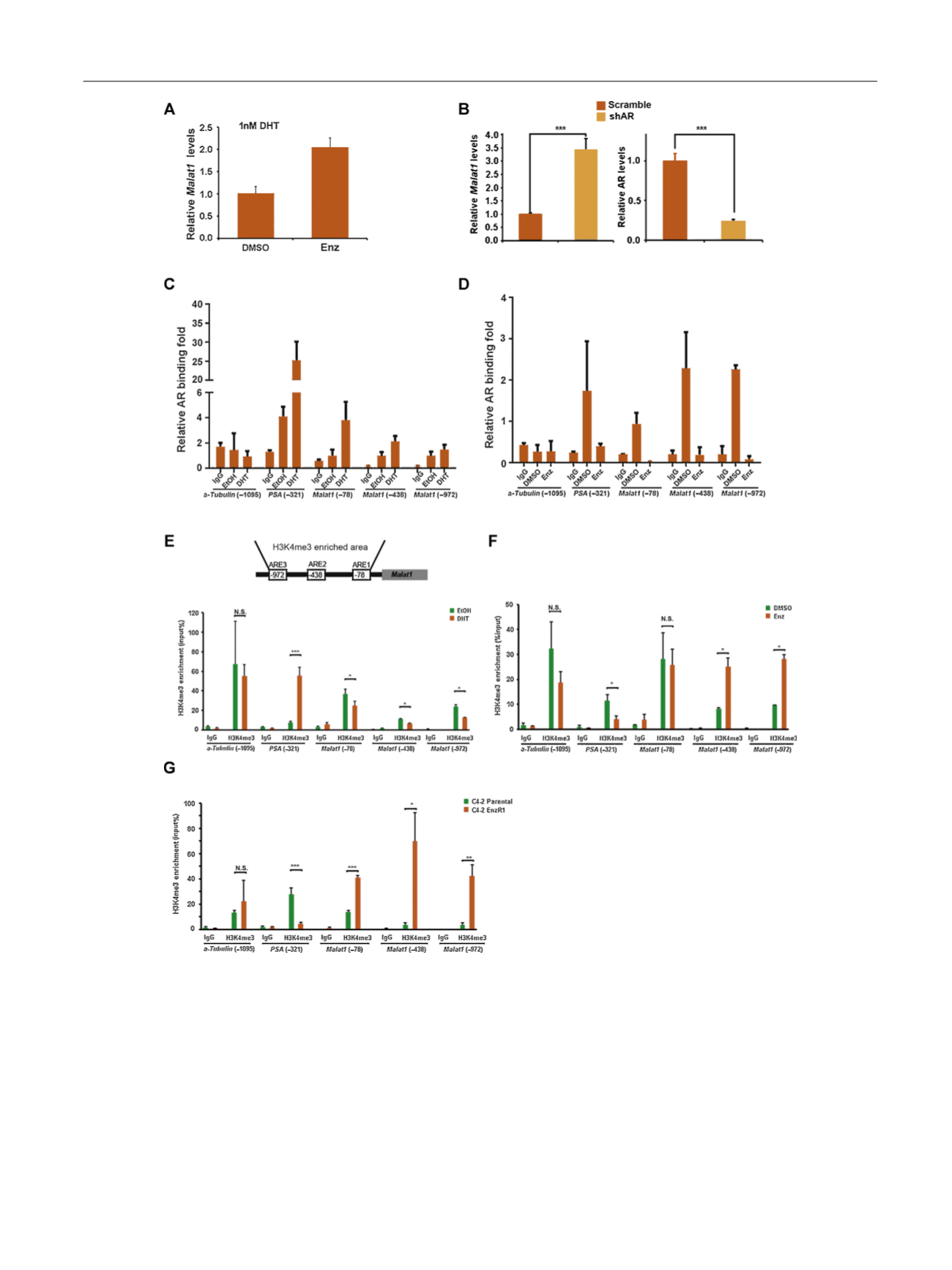

[(Fig._2)TD$FIG]
Fig. 2 – Androgen receptor (AR) regulates
Malat1
expression by directly binding to its promoter. (A) C4-2 cells were cultured in media containing 1 nM
dihydrotestosterone (DHT), the treatment with 10
m
M enzalutamide (Enz) could result in increased expression of
Malat1
. (B) Suppression of AR
expression in C4-2 cells through short hairpin RNA (right) increases
Malat1
expression (left). (C) AR binding to regulatory elements of
Malat1
promoter was enhanced in response to 10 nM DHT, and (D) was reduced in response to 10
m
M Enz in C4-2 cells. Cells were treated with either 10 nM
DHT or 10
m
M Enz for 24 h. Chromatin immunoprecipitation assay was performed using anti-AR antibody followed by qPCR with specific primers for
predicted
AR
binding sequence, ARE at the
PSA
promoter region served as positive controls and non-ARE at alpha-
Tubulin
promoter region was used
as negative controls. (E) Top, schematic map of AR binding to
Malat1
promoter and the H3K4me3 enrichment in
Malat1
promoter. Bottom, DHT
reduces H3K4me3 levels of
Malat1
promoter after C4-2 cells were cultured with 10 nM DHT for 24 h. (F) Enz increases H3K4me3 levels of
Malat1
promoter after C4-2 cells were treated with 10
m
M Enz for 24 h. (G) H3K4me3 levels in
Malat1
promoter are higher in C4-2 Enz-resistant cells
compared to parental C4-2 cells. H3K4me3 enrichment in the promoter region of
PSA
or alpha-
Tubulin
as experimental positive or negative controls,
respectively.
DMSO = dimethyl sulfoxide; IgG = immunoglobulin-G; N.S. = not significant.
*
p
< 0.05.
**
p
< 0.01.
***
p
< 0.001.
E U R O P E A N U R O L O G Y 7 2 ( 2 0 1 7 ) 8 3 5 – 8 4 4
839
















